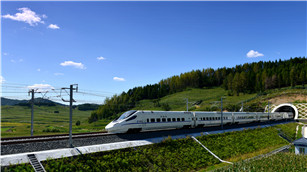Opinion: Overcoming the challenges of NE China
By Dan Steinbock
( China Daily )
2016-03-23
In the next five years, China's steel sector has to reduce capacity by 100-150 million metric tons, while the coal-mining sector must also cut capacity by 500 million tons, with another 500 million tons to be restructured in the following three to five years.
Things are not likely to get better anytime soon. Recently, Chinese steel prices experienced a short-term rise, and market conditions are expected to improve after the shutdown of steel factories. Yet a full recovery for the global steel industry may take a few years.
Northeast China comprises Liaoning, Jilin and Heilongjiang provinces; it is also the country's industrial base. In the early 2000s, the government's "Revitalize the Northeast" campaign sought to turn the region into an economic growth engine. More recently, the rebalancing of the economy has been shifting the growth momentum away from heavy industries toward consumption and innovation-which means diminishing prospects for the Northeast.
Some observers call the Northeast China's "rustbelt". In the US, the belt extends from New York to Michigan. In the 1980s, it was plagued by economic decline, population loss and urban decay, because of the shrinking of its once powerful industrial sector. Some enclaves never really recovered.
There may be some parallels between the US rustbelt and Northeast China, but differences abound. By the early 1980s, the US was already a major advanced economy with high living standards. It completed its industrialization decades ago, and the service sector dominated employment.
In China, the differentiation of regional economies is still accelerating, average living standards remain relatively low, and industrialization continues in many provinces. China's transition to a service-centric economy has only begun. And the central government, through its stakes in the State-owned enterprises, can still play a major role in shaping the transition.
In other words, China's so-called "rustbelt" has legitimate hope, but only with the right policies.
If overcapacity is reduced by 30 percent in targeted sectors-steel, coal mining and cement-it would translate to layoffs of up to 3 million workers in the coming two to three years. Last year, China created 13.1 million new urban jobs and this year's target is 10 million. So if a significant majority of the laid-off workers in the Northeast can be re-employed, the regional economy would prove resilient.
In the coal and steel sectors, the government will allocate $15.4 billion in the next two years to help laid-off workers find new jobs, particularly in the service sector. In the short term, workers' training, re-skilling and fiscal support can alleviate some of their transition pain.
While restructuring the SOEs will reduce their work force, it will also contribute to the creation of new firms that will offer new job opportunities. As China moves toward a more entrepreneurial economy, the government is encouraging start-ups, particularly in new and emerging industries, which could help younger employees.
But channeling the right support to the right targets requires good planning and integrity. Consequently, misleading accounts-including the recent case about the plight of coal miners in Heilongjiang-underscore the importance of the ongoing anti-corruption campaign.
Therefore, the government has to make all-out efforts to promote productivity and upgrade innovation in Northeast China by, say, attracting domestic and foreign anchor companies, homegrown talents and more foreign direct investment, greater ease in doing business, including facilitating easier cross-regional labor flows.
Internationally, the Belt and Road Initiative can support China, its trade partners, including its neighbors in the northeast. As these countries, too, continue to industrialize and urbanize, they need more upgraded infrastructure facilities that China can help build.
The transition will be challenging but the alternative, following the old policies, is far worse, because that would bankrupt the SOEs, wreck banks, kill jobs and devastate regional economies. Reforms are critical.
While Chinese policymakers believe the national economy will create enough jobs to absorb the laid-off workers, the task won't be easy. But it is feasible.
The author is the founder of Difference Group and has served as research director of international business at the India China and America Institute (US) and a visiting fellow at the Shanghai Institutes for International Studies (China) and the EU Centre (Singapore).




